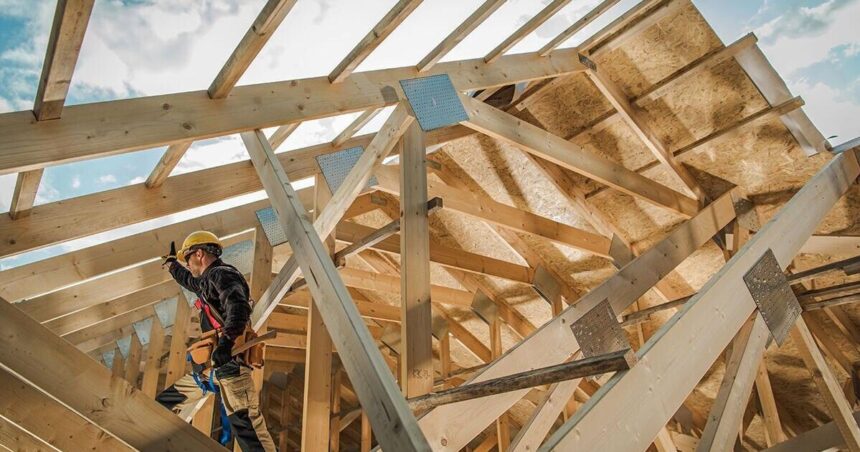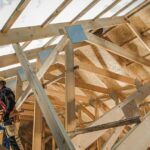Missoula is the third least affordable city in Montana for teachers who are trying to pay for housing, Montana lawmakers heard during a presentation on Thursday.
“One industry that’s particularly impacted by housing costs is teachers,” explained Molly DelCurto, a fiscal analyst with the Legislative Fiscal Division. She was giving a presentation on Montana’s increasingly unaffordable housing market to the Modernization and Risk Analysis Committee.
In Missoula, the median income for a two-teacher household is about $100,000. DelCurto said the average home value in the county is about $559,000, so a two-teacher household making median income would be paying about 42.3% of their monthly gross income to the mortgage on a typical home.
That’s only better than two places in Montana. In Bozeman, a two-teacher household would pay around 56.1% of their income on a mortgage and in Belgrade the household would pay around 39.1%.
People are also reading…
Most lenders won’t give out a loan if a household is paying more than around a third of their income to the mortgage, DelCurto added.
She said that in 2014, there was no county in Montana where a two-teacher household making median income was paying more than 28% of their income toward a mortgage on a median-priced home. In 2024, there are nearly a dozen counties, all in western or southwestern Montana, where teachers can’t afford homes.
Missoula Public Schools Superintendent Micah Hill was unavailable for comment on Friday. Amanda Curtis, president of the Montana Federation for Public Employees, which represents K-12 educators and support staff, said that it’s long been clear that Montana teachers can’t afford to live where they work in many places in the state.
“It’s very common for teachers to have two or three jobs,” Curtis said. She recently got an email from one teacher in Helena who has to have three jobs, including her full-time teaching job, in order to pay increased insurance costs.
Curtis said she’s been encouraged to see some efforts to address the issue at the state level, but she’d like to see more creative ideas, especially with the state’s budget surplus.
“I’m not seeing very impressive plans yet (from state lawmakers),” Curtis said.
State Rep. Jane Gillette, a Republican from Bozeman, asked DelCurto if teachers are more susceptible to increasing home prices than other professionals. DelCurto responded that many workers in many industries are increasingly unable to afford homes in Montana, but teacher wages are public so it’s easier to get that information. That’s why she chose to use teachers as an example to highlight how homes have gotten more unaffordable in the state.
DelCurto also gave a historical overview of what happened in Montana to get to the point where the National Association of Realtors has ranked the state the least affordable in the U.S. for all income levels trying to purchase housing.
A presentation slide shown to Montana lawmakers on Oct. 10, 2024 about housing.
“The pre-2000s housing market was really dominated by our rural economy,” she explained. “Montana was dominated by mining, agriculture and the natural resources industries.”
The state was characterized by low population density and a high proportion of single-family homes. Housing prices here were consistently under the median for the United States.
“Small urban centers saw little to no pressure to expand housing,” she said.
Then, post-2000, the state started to see a marked increase in the second home and vacation home market, meaning those homes were not being used by people who lived and worked here full-time. That was coupled with high population growth, not enough housing construction and the conversion of other homes into short-term rentals for AirBnB and VRBO.
And then the COVID-19 pandemic happened.
“Post-pandemic, we saw all of these factors expand,” DelCurto said.
Between 2019 and 2023, Montana’s population grew by 5.8%. From 2019 to 2022, the number of remote workers here increased by 71%. Housing sales prices increased 72.2% from 2019 to 2024, and the inventory of homes for sale decreased by 7.7% from 2019 to 2024.
In the 10-year period leading up to 2024, DelCurto said Montana’s median home sales price increased 125%, which is higher than the national average of 96.3%.
Only other states like Idaho, Utah, Colorado, Nevada and Arizona had similar price increases.
Toni Henneman, a research analyst with the Legislative Services Division, gave a rundown of all the ways the Legislature tried to address Montana’s affordable housing crisis.
Among the laws passed was Senate Bill 382, Montana’s Land Use and Planning Act.
“In short, it kind of scraps the existing framework for land use planning and creates a new system,” she said.
Missoula, like the other largest urban centers in Montana, was required to implement it. However, that law is being challenged in court. She also noted that the Montana Housing Taskforce recently delivered another long list of policy recommendations that will have to be considered by lawmakers in the next session.
Sarah Swanson, director of the Montana Department of Labor, said that a team of economists is working on a large study about wages for all of Montana’s 28,000 public school employees. The publication should be ready by the end of October, she said, and it will give lawmakers broad insight to wages in different counties across the state.
David Erickson is the business reporter for the Missoulian.




